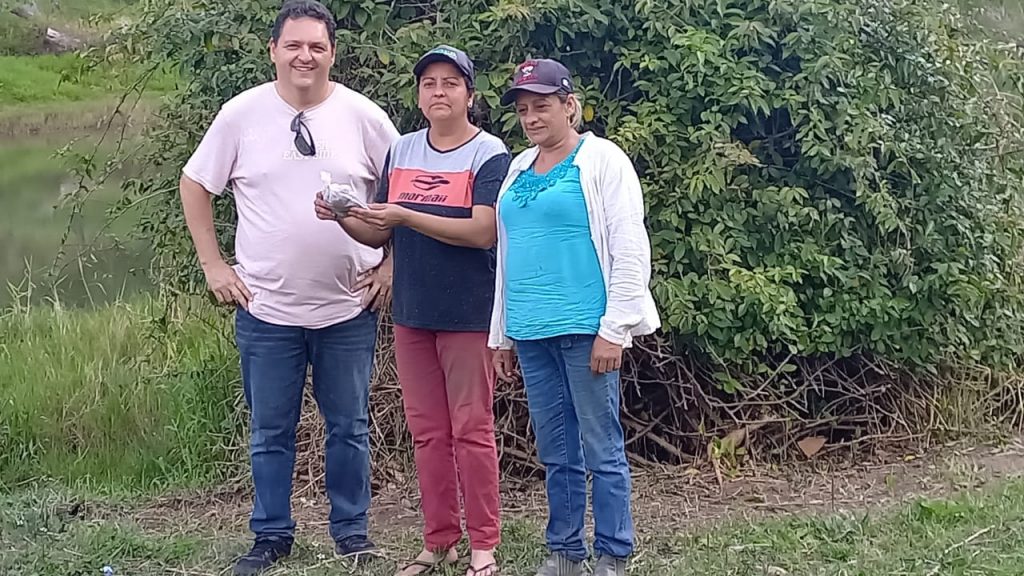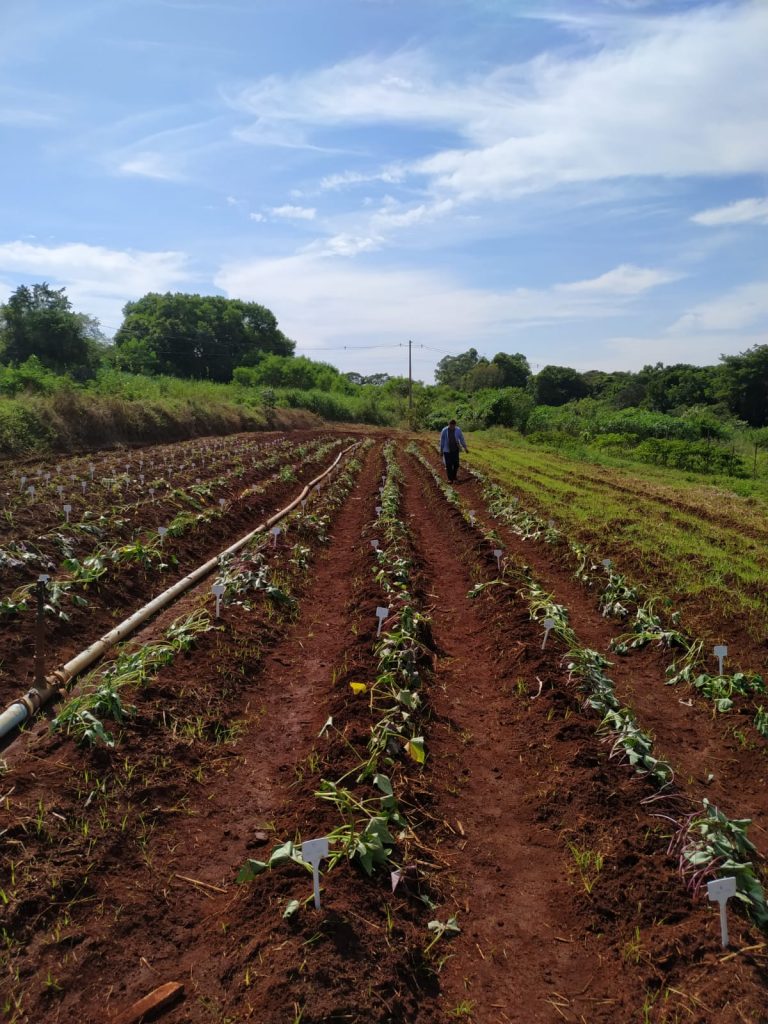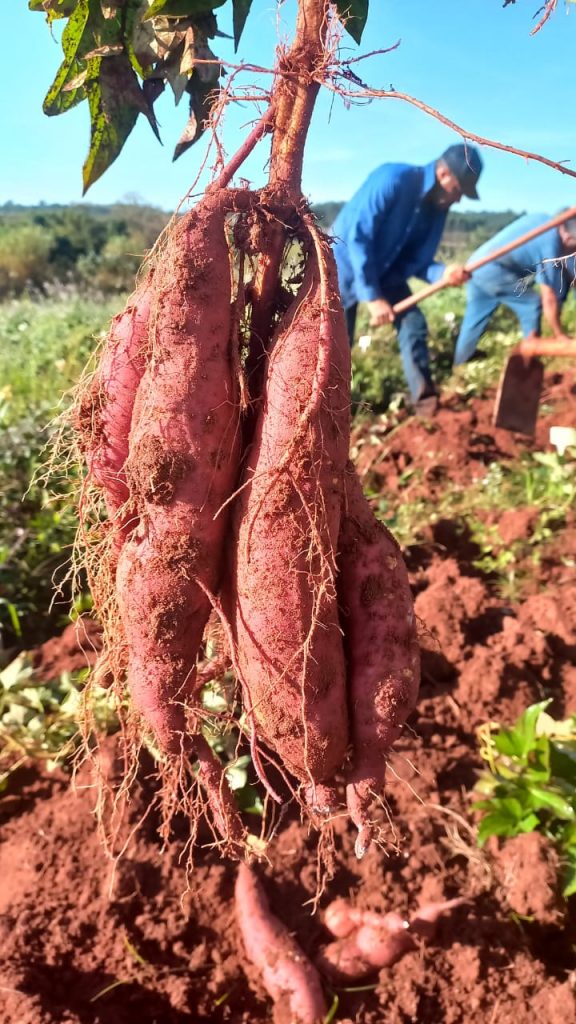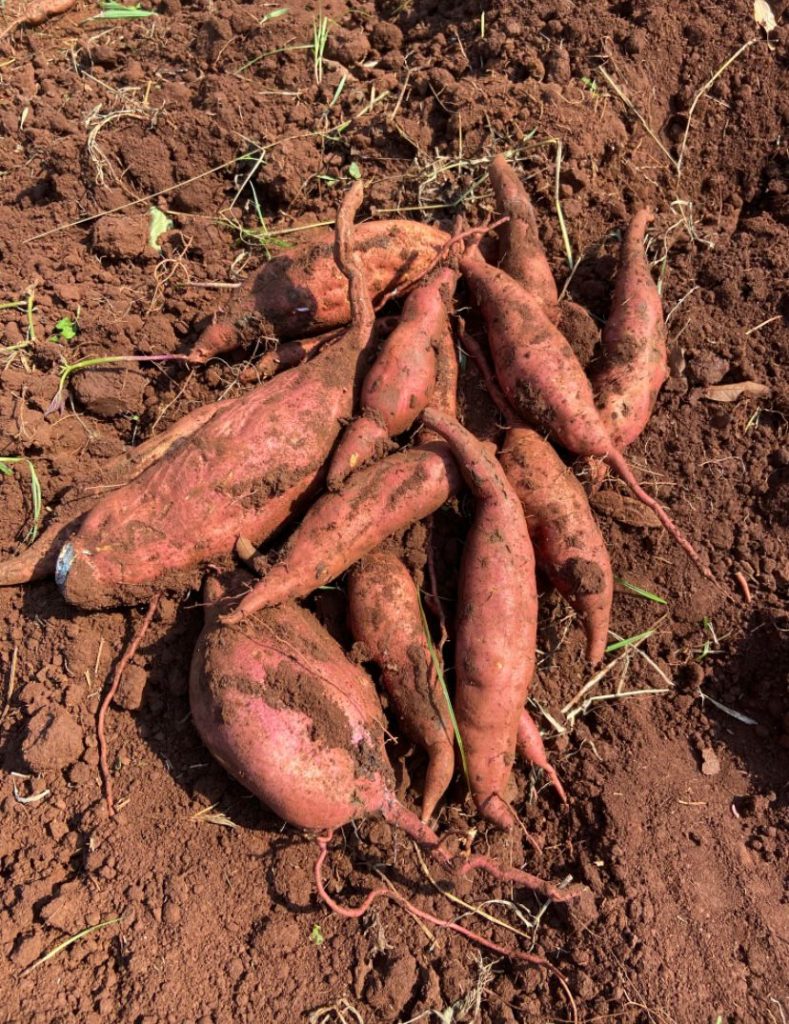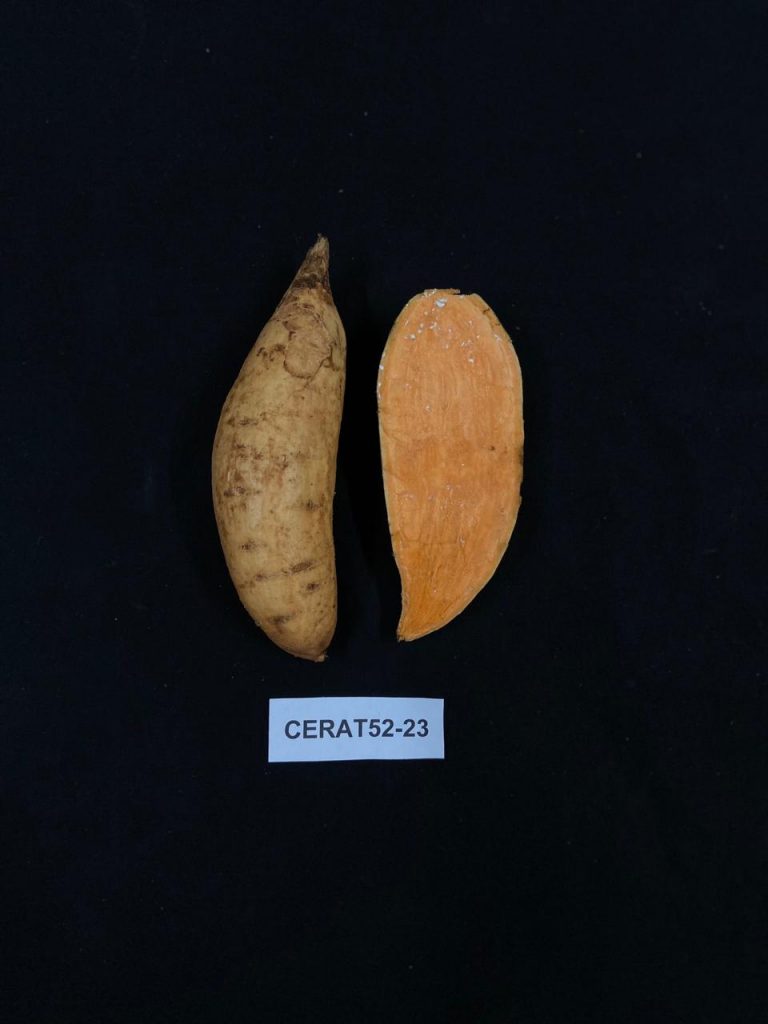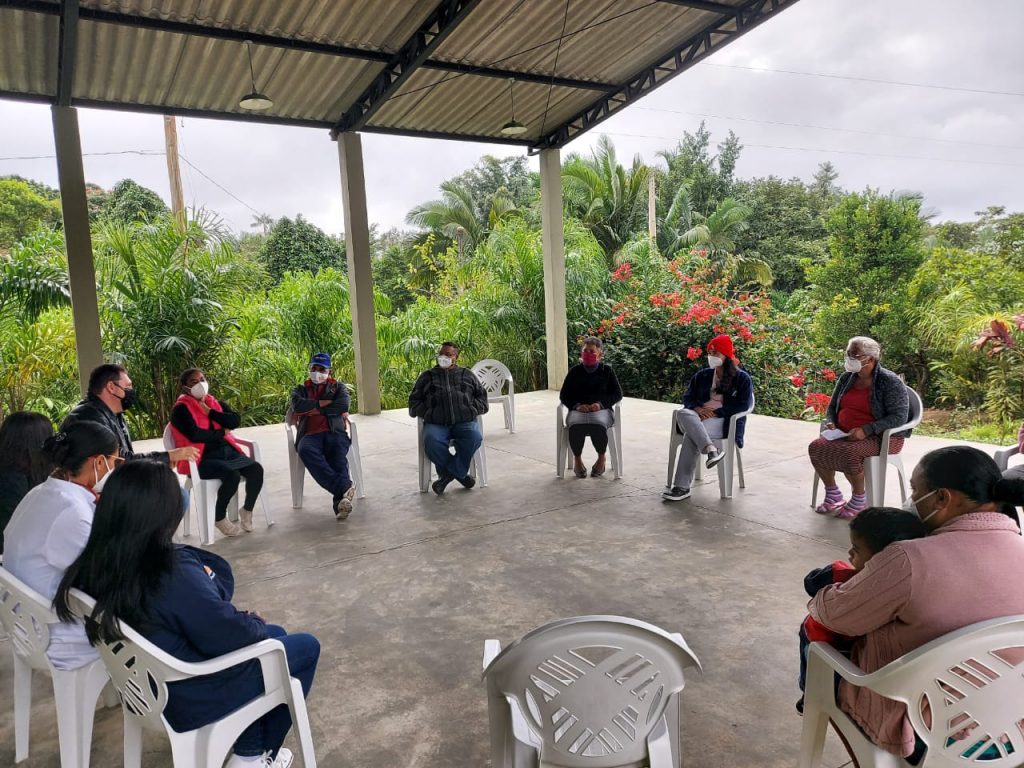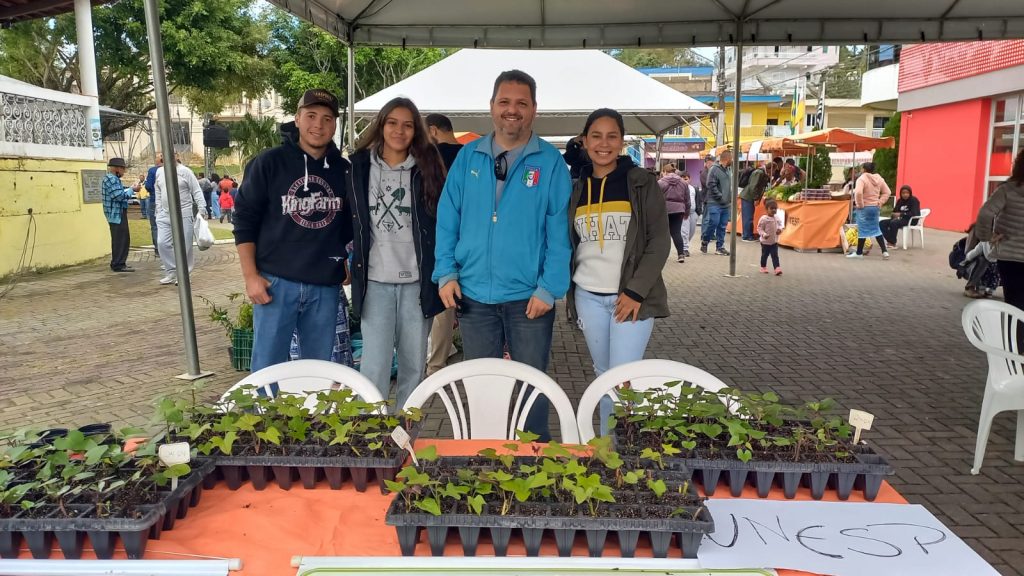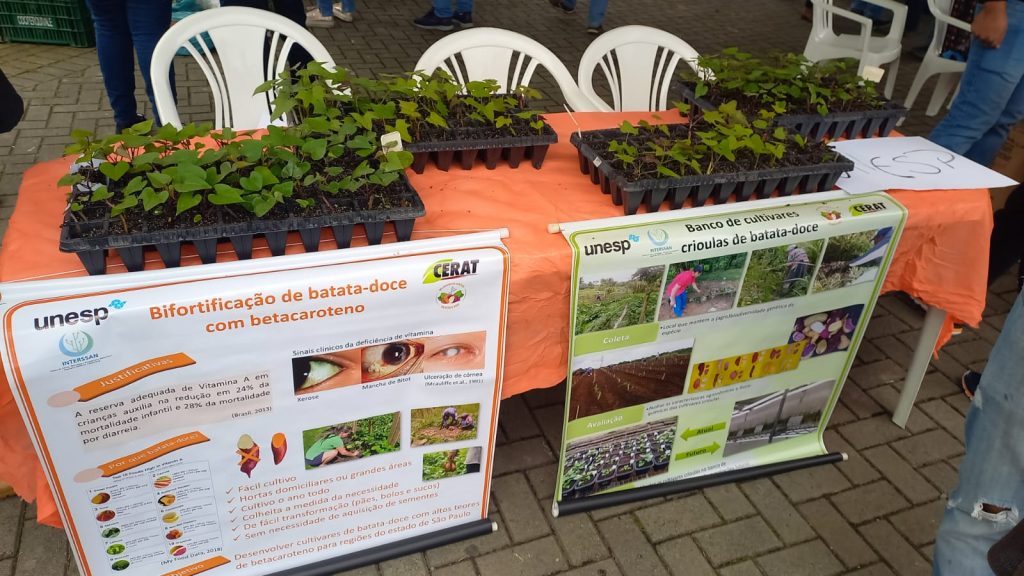por: Professor Pablo Forlan Vargas, for English version click here

Ainda há no Brasil bolsões onde a hipovitaminose A é um grave problema de saúde pública, que pode levar a uma série de doenças, tais como síndrome ocular denominada xeroftalmia (que pode levar a cegueira), afeta negativamente o sistema imunológico e em crianças provoca o déficit de crescimento, baixo desempenho cognitivo e aumento da gravidade de infecções.
Assim, visando contribuir com o suprimento adequado de vitamina A, a Unesp iniciou em 2017 um pioneiro programa de melhoramento genético de batata-doce, com foco em biofortificação com betacaroteno, precursor da vitamina A.
A primeira etapa do projeto teve como meta introduzir genótipos de batata-doce de polpa alaranjada e selecionar aqueles com melhor desempenho agronômico aliado a altos teores de betacaroteno. Esse processo de seleção de genótipos superiores ocorreu por dois ciclos de seleção e em três regiões do estado de São Paulo (clique nas imagens para vê-las em tamanho real).
De um conjunto de mais de mil genótipos, foram selecionados para a segunda etapa 24 genótipos, que possuíam boas características agronômicas e altos teores de betacaroteno. Novos campos de seleção foram instalados em três localidades do estado de São Paulo e em três épocas de cultivo, assim, foi possível verificar a adaptabilidade e estabilidade desses genótipos nas diferentes condições adafoclimáticas de cultivo. Adicionalmente, foi realizado uma análise sensorial das raízes cozidas, a fim de verificar a aceitação por parte dos consumidores.
Identificados genótipos promissores que poderão, num futuro próximo, serem lançados como cultivares Unesp, foi realizado a introdução desses genótipos em dois grupos da população, a fim de iniciar o processo de promoção do consumo e cultivo da batata-doce biofortificada.
A primeira ação de introdução ocorreu no Quilombo Peropava, localizado no município de Registro (SP). Na oportunidade, foram apresentadas aos moradores do quilombo as características dessa hortaliça, bem como seus benefícios a saúde humana. Diferentes formas de consumo foram preparadas e degustadas pelos presentes. Também houve o plantio de mudas de batata-doce biofortificada visando à contínua disponibilidade de raízes aos moradores do quilombo.
Em Tapiraí (SP), na Associação Rural Comunitária de Promoção Humana e Proteção à Natureza, em parceria com o “Legado das Águas – Reserva Votorantim” foi realizado plantio de diferentes genótipos de batata-doce, visando o cultivo com foco comercial, haja vista que os membros dessa associação comercializam seus produtos em feiras livres na região de Sorocaba (SP). Além do plantio e posterior colheita juntamente com os associados, foram transmitidos informações sobre técnicas de cultivo de batata-doce, bem como as características nutricionais da batata-doce biofortificada.
As próximas ações do programa de melhoramento são realizar o lançamento de cultivares de batata-doce biofortificada, com os respectivos Registro e Proteção das cultivares no Ministério de Agricultura, Pecuária e Abastecimento, assim como a disponibilização de propágulos/mudas dessas cultivares biofortificada para a sociedade.
O desenvolvimento deste projeto está sendo realizado com a colaboração do International Potato Center, por meio da pesquisadora associada do projeto Dra. Maria Isabel Andrade, Programa de Pós-Graduação em Agronomia (Genética e Melhoramento de Plantas) da FCAV, Programa de Pós-Graduação em Agronomia (Sistemas de Produção) da FE, FCAVR, CERAT, FAPESP, Prope, Proec e AIUN.
O projeto faz parte das ações da Aliança Global de Pesquisa “BioGATe – Abordagem multidisciplinar da biodiversidade tropical, das moléculas aos ecossistemas” (https://arex.unesp.br/gra/biogate/), coordenado na Unesp/ FCAV, dentro do Projeto Unesp de Internacionalização Unesp – Capes – PrInt.
Fotos por Bianca Santos Matinata




























